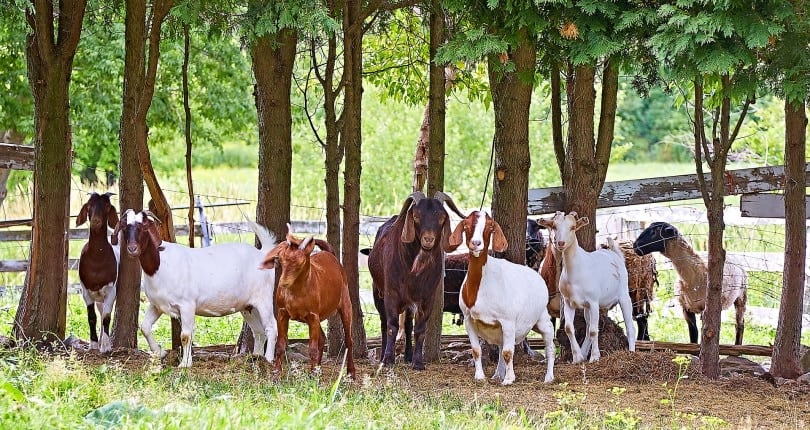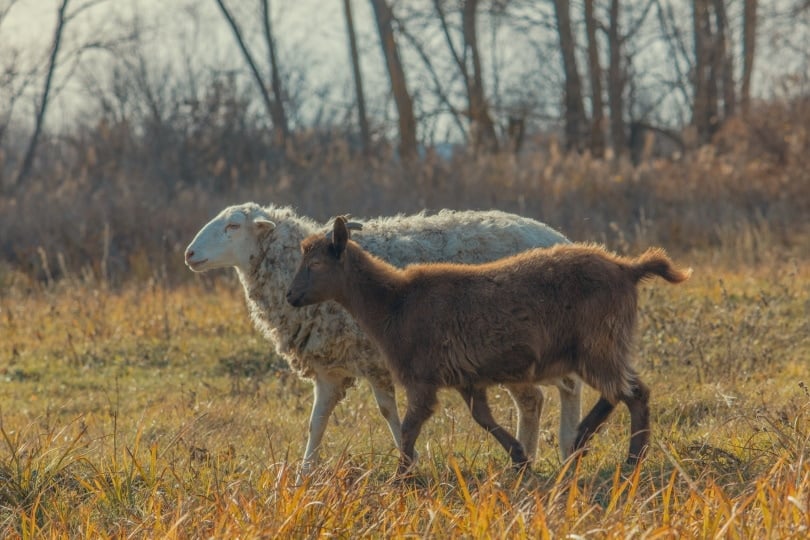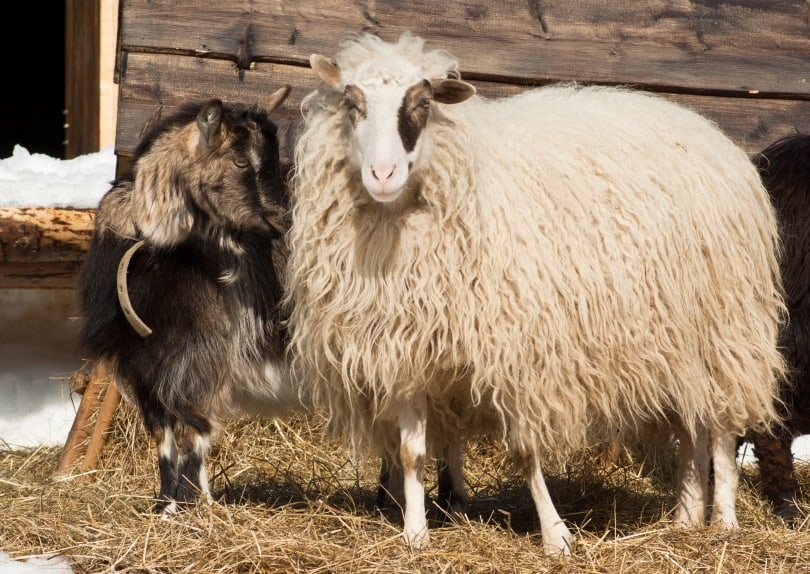The answer to this question is a little more nuanced than a simple yes or no because it depends on whether you mean “in general” or “successfully.” A goat can get a sheep pregnant and vice versa. However, because their gene pool is distinct and they are different species of animals, the offspring is usually stillborn. Additionally, even when goats and sheep are pastured together, they rarely mate, indicating a robust genetic distance between them. Despite this distance, there are rare “successful” cases of mating between sheep and goats, but the hybrid animal is not a widespread phenomenon.

Hybridization of Animals
Hybridization occurs when two animals of different species mate. The key to hybridization is in our genetics. Our genes contain instructions for our cells. They determine everything from the shape and length of our limbs to the exact production of new cells in our bodies.
When two animals of the same sexually reproductive species mate, the genetic instructions are similar and compatible. The offspring will inherit individual traits from both parents, but the parents’ bodies are similar and carry similar genetic instructions. The individual characteristics inherited may result in stronger or weaker offspring, but — barring genetic mutation — the offspring will be recognizable as a member of the species.

Why Don’t Most Hybrids Survive?
You may see conflicting genetic instructions between different species that result in offspring that cannot survive for many reasons. For instance, if you were to create somehow a successful mating between a parrot and a wolf, the offspring may be born with missing limbs or organs because they received half of the genetic information of a wolf and half of a parrot.
Hybridization of animals does occur naturally, usually between species who share an overlapping territory and have similar genetic makeups, such as the cases of Polar and Grizzly Bears or the Snow and Opal-capped Manakins.
Interventional Hybridization
Interventional hybridization can also occur to assist the repopulation of a threatened species. However, interventional hybridization is only done after a deep genetic study of both species to ensure that the offspring will be viable.
Experimental Hybridization
Experimental hybridization, such as in the case of Ligers, usually result in non-viable offspring. Those offspring who survive are almost always sterile and cannot further pass the hybridization down through natural means. In other words, experimental hybridization does not usually result in the creation of a new species.

Additionally, many hybrid animals exhibit a phenomenon known as Haldane’s Rule. Haldane’s Rule states that “when in the first filial generation of offspring of two different species one sex is absent, rare, or sterile, that sex is the heterogametic sex.”
When two different species produce offspring, often one sex is absent, rare, or infertile in layman’s terms. When this occurs, we can determine which sex has the genetic components to influence the sex traits of the offspring.
In humans, males are the heterogametic sex. Sperm can carry either X or Y chromosomes, and this will determine the sex of the baby. With inviable hybrid species, the sex with these traits will generally be sterile if present in the successful matings at all.
Differences Between Goats and Sheep
There is a long-standing belief in goat-sheep hybridization, likely because of the physical similarity in appearances. However, these animals rarely produce living offspring when experimental hybridization is attempted.
One major cause of unviability of goat-sheep hybrids is the difference in chromosomes between the species. Sheep have 54 chromosome pairs while goats at 60. This leaves some six chromosomal teams incomplete in-utero. As a result, most goat-sheep hybrids do not even make it past the embryonic stage, let alone living to reproduce.

Cases of “Successful” Goat-Sheep Hybrids
In 2000, the Botswana Ministry of Agriculture reported a living sheep-goat hybrid resulting from a male sheep impregnating a female goat. The offspring had 57 chromosomes, right in the middle of the sheep’s 54 and the goat’s 60. He had a coarse, goat-like outer coat with a wooly, sheep-like inner jacket. He also presented with long legs like a goat but a heavy body like a sheep. Like many hybrid animals, he was sterile, but that didn’t stop him from trying as he would mount both ewes and does regardless of if they were in heat.
A male sheep also impregnated a female goat in New Zealand, producing a mixed litter of kids and a female sheep-goat hybrid. She was shown to be fertile when she successfully mated with a ram.
In France, a rare natural mating of a doe and a ram produced a living female hybrid who later was backcrossed with a ram and delivered a stillborn and a residing male offspring with 54 chromosomes.

Final Thoughts
While species hybridization is natural and sometimes necessary, experimental hybridization rarely produces any viable “new” species. One might even consider it cruel to be experimenting on live animals in this way. Sheep-goat hybrids can rarely be successful in the loosest possible sense, but the genetic differences between sheep and goats are apparent.
Related Reads:
- Why Do Sheep & Goats Wear Bells? Is It Annoying for Them?
- 4 Best Mineral Blocks for Sheep and Goats – Reviews & Top Picks
- Can Wolves and Dogs Mate? What Science Says
Featured Image Credit: Andrii Muzyka, Shutterstock
